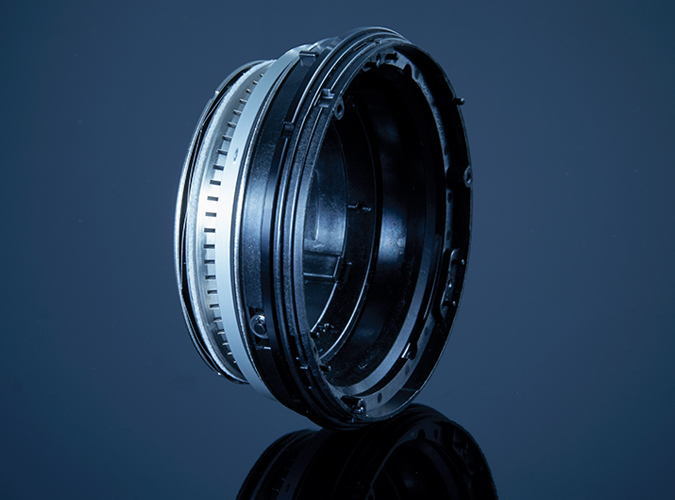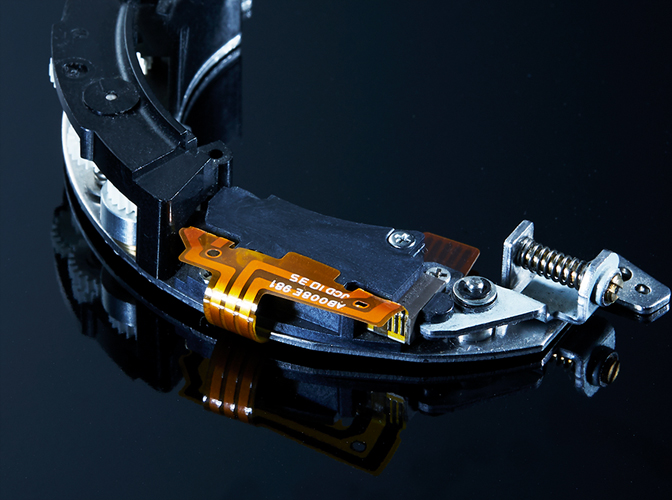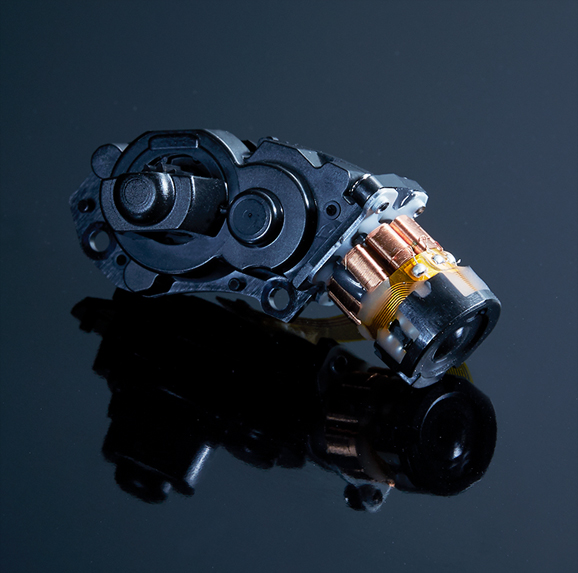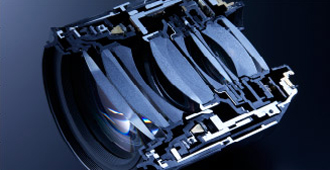
The Ultrasonic Silent
Drive (USD)
To attain and commercialize the performance requirements of speed, silent operation and accurate stop for auto-focusing motors, repeated trial and error is required in addition to the theory, given that their purposes differ from those of general motors. Tamron began by working to achieve the internal production of ultrasonic motors, which were a standard technology at the time. In 2010, the SP 70-300mm F/4-5.6 Di VC USD (Model A005), which incorporated a USD (Ultrasonic Silent Drive) motor, was released.

Independently developed
Piezo Drive (PZD)
With only conventional thinking, it is impossible to create an original lens that is unique to Tamron. Almost in tandem with the development of the USD, Tamron worked to create an original actuator, and it became the first company in the world to succeed in applying an actuator with rectangular piezoelectric ceramics elements to a lens drive. Shaped like a crescent, the PZD (Piezo Drive) standing wave type ultrasonic motor was introduced to the 18-270mm F/3.5-6.3 Di II VC PZD (Model B008) as a starter, together with the modified VC (Vibration Compensation) mechanism, which was also independently developed. This made a significant contribution to size reduction.

Newly developed HLD
(High/Low torque-modulated Drive)
An ideal can be pursued by continuing to make new attempts, without being satisfied with the status quo. The newly developed HLD (High/Low torque-modulated Drive) attained an excellent drive force, size reduction and power consumption cuts. It led to the 10-24mm F/3.5-4.5 Di II VC HLD (Model B023), a super wide-angle zoom lens with a built-in VC mechanism boasting the widest*1 focus range in its product range released in 2017, and also to the 18-400mm F/3.5-6.3 Di II VC HLD (Model B028), an ultra-telephoto all-in-one zoom lens with a built-in VC mechanism as the world’s first such lens to attain a zoom ratio of 22.2*2. As a result, the internal production of actuators for auto-focusing features and high performance image stabilization mechanisms and the software for controlling them served as the sources of products that departed from the conventional notion, and this is now shaping a new era at Tamron.
*1 Among ultra-wide-angle zoom lenses for APS-C DSLR cameras (as of April 2018; Source: Tamron)
*2 Among interchangeable lenses for DSLR cameras (as of May 2017; Source: Tamron)



